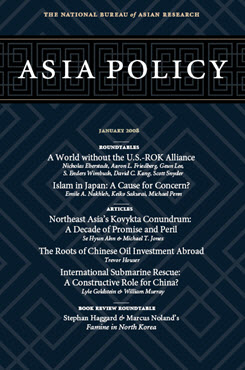Northeast Asia's Kovykta Conundrum
A Decade of Promise and Peril
This article seeks to explain why—despite the potential for gas from Siberia and the Russian Far East to provide greater energy security for Northeast Asia—a decade of negotiations has still not resulted in an agreement to construct the Kovykta pipeline.
EXECUTIVE SUMMARY
MAIN ARGUMENT
Gas from Russia’s Kovykta field has the potential not only to drastically reduce Northeast Asia’s energy shortage but also to help diversify Northeast Asia’s traditional sources of energy away from the Middle East.
The potential for Kovykta gas to reach any Northeast Asian country, however, has been delayed for over ten years due to the following factors:
- The politics of route determination – Though routing the pipeline via North Korea and Mongolia would be cheaper, government and private sector sensitivities have resulted in proposed routes that circumvent the two countries and thus drive up the costs of any such pipeline.
- Inherent complexities of gas investments – Natural gas is intrinsically more difficult to trade than oil, and gas deals require much more confidence, guarantees, and money from investors and governments.
- Demand security – China’s market is important to Kovykta’s success. Despite plans for further gas market development, however, China’s reliance on cheap coal has created a soft market for higher-priced gas.
- Russia’s resource nationalism – Rising oil prices have given Moscow impetus to renationalize Russia’s energy sector, thereby both complicating negotiations and causing investors to be wary of a Russia that could use energy as a political weapon.
POLICY IMPLICATIONS
Though a more centralized role for Russia in the Kovykta project could speed the decisionmaking process, striking a price that suits both China and Russia will be the key determinant in the fate of the pipeline. Gazprom is currently focused on other projects, however, and Kovykta will possibly remain idle for several years to come. Not allowing Russia’s giant gas field to have significant market outlets in Asia will keep gas prices higher than they would be otherwise, potentially diminish available supplies to the U.S. West Coast, and keep incentives in place for Asia to increase ties to “rogue” gas-supplier states such as Iran and Myanmar.
About Asia Policy
Asia Policy is a peer-reviewed scholarly journal presenting policy-relevant academic research on the Asia-Pacific that draws clear and concise conclusions useful to today’s policymakers. Asia Policy is published quarterly in January, April, July, and October and accepts submissions on a rolling basis. Learn more


